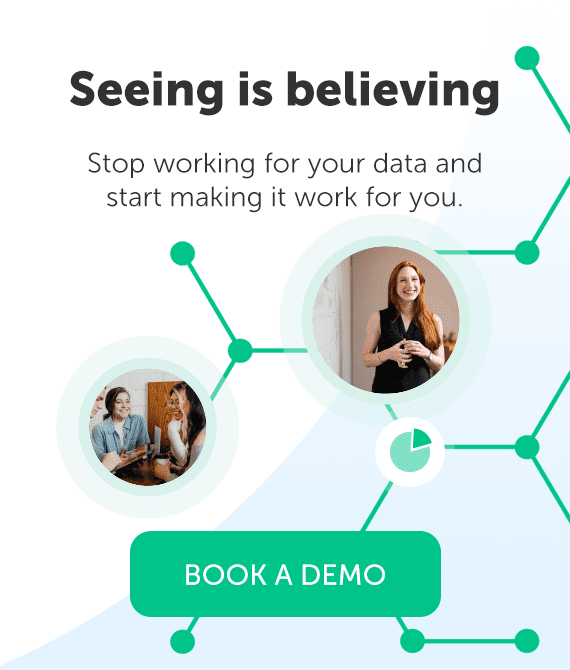Gone are the days when you only needed one person to sign on the dotted line to close a deal. Buying groups now have an average of 11 or more people involved in purchasing decisions. If managing a deal with more legs than a Superbowl parlay isn’t enough, the average annual turnover rate hit 57.3% in 2021. These hurdles can slow your sales cycle to a crawl (or a complete stop) unless you find a new path to revenue—this is where multi-threading comes in.
- What is multithreading in sales?
- How to multi-thread your sales
- Multi-threading your way to closed-won
What is multithreading in sales?
Multi-threading is the process of selling to multiple decision-makers within a target account. This is the opposite of traditional single-threaded sales with one buyer. A single-threaded sales approach is appealing because it’s simple. However, all our hard work will go down the drain if your only point of contact turns out to be a dud. Despite the risks of putting all your eggs in one basket, 78% of sales reps still rely on a single buyer to get a deal over the finish line.
Multi-threaded selling is like an insurance policy. If one contact is unresponsive or leaves the company, you still have a full roster of stakeholders to keep the deal moving. This approach will turn your funnel into a well-oiled machine that crushes sales targets. In fact, Gartner research suggests that by 2026, sales teams using a multi-threaded approach will see revenue growth that outperforms single-threaded competitors by a whopping 50%.
Multi-threading is starting to sound pretty good, right?
How to multi-thread your sales
Now that you have a few reasons to ditch the single-threaded approach, let’s dive into multi-threading. Follow these 5 steps to multi-thread your sales and drive more revenue.
1. Identify key stakeholders
The first step to winning more deals with multi-threading is figuring out who is pulling the strings. This group could include anyone from entry-level positions all the way up to c-suite executives. These individuals can influence purchasing in different ways depending on their role.
Generally, there are 6 roles within a buying group:
- Initiators identify a problem to others in authority positions.
- Influencers guide the decision on making a purchase (or not).
- Economic buyers control the cash flow.
- Purchasers buy the product or service after the official sign-off.
- Users employ the product or service to perform their job.
- Administrators implement the solution.
Keep in mind—the bigger the sale, the more people you have to sell to. Purchases over $500,000 can have 5 or more buying groups with 6 to 10 colleagues. The number of people in each group can flex up to 20 for complex deals.
2. Find buyer champions
It’s natural to think high-level executives are the quickest way to a win, but buyer roles are more critical to closing deals than titles. Even though CEOs have the final say, the people working under them usually do all the heavy lifting to get your deal approved. The latter group is usually where you will find a buyer champion. They’re the ones selling your solution to their colleagues on your behalf.
Buyer champions can be in any role on the purchasing side. The best way to find them is by leveraging your existing customer data. Use filters to segment data by annual revenue, average deal size, conversion rates, and referrals. Look for contacts with multiple closed-won opportunities that generate decent revenue on a consistent basis. Any time you invest in sorting data will pay off when you find your golden ticket to selling on autopilot.
3. Track job changes
Turnover isn’t the only threat to your commission check. 86% of reps say they either lost or had a deal delayed because of a role change. Fortunately, multi-threading your sales with groups instead of a single person can help keep money on the table. Tracking role changes and departures will give you the chance to make some calls to prevent your deal from getting lost in the shuffle.
In a multi-threaded sales environment, you also have to plan for redundancy on your team. The average annual turnover for sales reps is 34.7%, and 1 in 10 companies can experience sales turnover rates over 55%. Using sales technology to track customer data will make for a seamless account transition when an employee quits or retires.
4. Leverage your network
Just like buying isn’t a solo mission, neither is selling. Collaborating on accounts can increase the likelihood of closing a deal by 258%. Bringing a specialist on a call to answer technical questions is an easy way to add credibility. Facilitating conversations between people in similar positions can build trust with prospects who like to talk to folks they consider their equals. This means connecting managers to managers, VPs to VPs, and so on.
Collaboration isn’t limited to negotiations. You can leverage multi-threaded accounts across your network to help cut down on cold calls. Before you call a prospect, find out who your colleagues and contacts know, who knows them, and how well. This will tell you who can score you a warm introduction that can increase prospect engagement 5X more than cold outreach.
5. Make buying easy
The world is crowded with good information, and buyers are struggling to deconflict sources before converting (if they convert at all). 95% of buying groups report having to revisit decisions at least once as new information emerges. Quality information is no longer a differentiator that can push the needle on a sale.
Sellers can help buyers cut through the noise by giving them a framework to make their own decisions. Multi-threaded sales have a lot of moving parts. It’s your job to make sense of all the subject matter so customers can prioritize perspectives, qualify trade-offs, and reconcile competing views.
Multi-threading your way to closed-won
Nurturing multiple prospects at the companies you sell to adds more than a safety net to your deals. Sales teams using a multi-threaded approach can get a 34% lift in win rates compared to single-threaded sales. Connecting the dots between contacts also leads to a shorter deal cycle. That’s less time between you and your commission.
So how can Introhive help?
Fortunately, Introhive captures the contacts that you’re engaging with on the client side meaning you can automatically surface the buying committee.From there you can pinpoint single threaded opportunities, Identify existing relationships that can help you multithread, and visualize the buying group to ensure you are engaging with an appropriate depth and breadth at the account or opportunity





